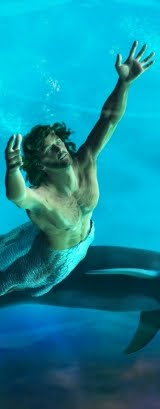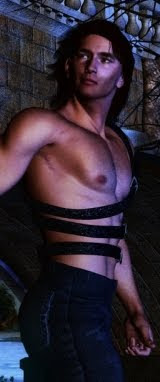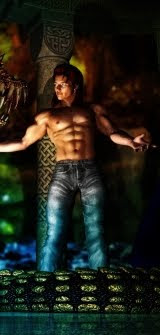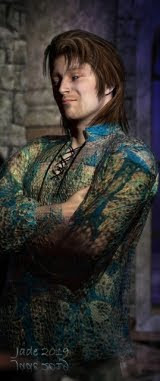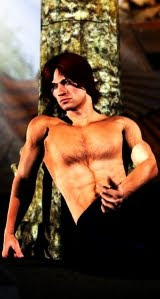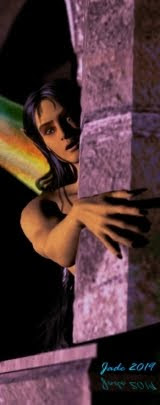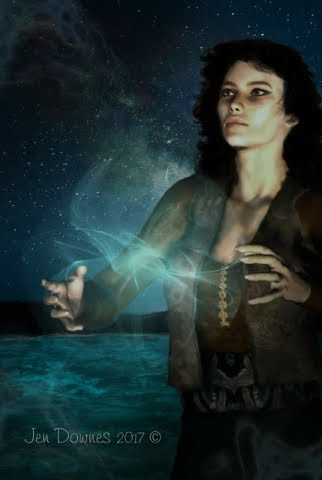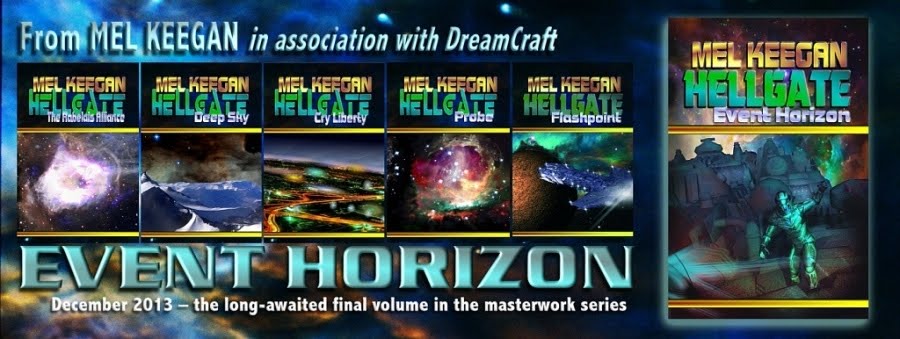click to see all images at large size...
Would you believe it -- post 666! So we thought, why not do "the number of the beast," or something similar. You have got to see the top one at large size ... it took the both of us to wrangle this one! Dave did the original render in Vue, and then in PhotoshopI did all the overpainting, of which there is, ooooh, a lot. Here's a 90% scale detail shot:
I did the demon character in DAZ -- it was mostly about playing with the morphs and over-driving everything till you wound up with a creature that's humanoid, but a long way from human. Then, I just couldn't resist this (and in case you're wondering, the text objects were done in Serif):
And last night, just out of curiosity, I set The Man in the Hat to render in Lux ... bearing in mind that I still have about 2% of an idea of what the hell I'm doing in Lux ... and here's the result:
Even at this level of proficiency (and I stress, I'm an absolute beginner at Reality/Lux -- the results are almost photographic. Check out the comparison:
On the left, artwork -- very nice art, but art nonetheless. On the right -- something that's so close to a photograph, you look, and then you look again, and there's only a couple of things that tell you it's not a photo. To me, what gives it away is the trousers. There are no creases in the fabric, and in the Lux render, this shows. Why no creases? Because the 3D model and its accompanying textures don't provide any. What's the cure for this? I need to hand-paint the textures to look creased. And if I hadn't run out of time, I would have done that! Next time, I intend to.
But I was very very pleased with the way the skintones rendered in Lux. I'm starting to see the luminosity I've been hankering for, for so long. My impressions of Lux so far? It's amazing -- and also, full marks go to the "bridge" that connects it to DAZ Studio. The Reality bridge is the magic that makes it all go. There's a 115pp user guide that accompanies Reality, but what people need, I think, is a hand-holding walk-through of the process. It was hair-raising the first few times out, and it's still confounding at times. But I'm getting there, sloooowly but surely. It certainly isn't confusing or intimidating now.
Anyway, the Man in the Hat that you see here as a Lux render took about five hours, to render at 1000x600 pixels, which brought it up to 3000 "samples per pixel." At that level, you can see minor differences in the resolution of the background over the 1500 samples capture, but the skintones were "cooked" at 1500 samples per pixel -- basically, what I do is to set the engine going and come back every hour or so, and capture a copy at the level of progress attained by the software up to that point. Lux is called an "infinite render" engine, which means it will render ... well, forever, till you stop it. It saves its work every three minutes, overwriting the same PNG file, and you can come along at any time, open said PNG and save it back on a new name, so you have a record of what the render looked like at 500 samples per pixel, and 1000, and 1500, and so forth. What I have found so far is that skintones are generally "cooked" in 1500-2000 samples; and brighter areas "cook" faster than darker ones.
My next experiments will be in closeups of human beings, where I should be able to make micro-adjustments in the skin mapping ... and in using "mesh lights" to get a photo studio effect ... and then in rendering exterior scenes using image based (IBL) lighting, and then in interior scenes, in where you can turn an object into a light. Which is so cool. (Gimme time to learn this stuff. It's, um, complicated.) And I would like to know how long it takes to render at L-A-R-G-E size, maybe 1600 pixels wide and 1000 high. I have a feeling it's a long, long process. Do I need more RAM? Mmm ... I need more RAM.
So there you are -- Post 666. Amazing. Where did the last two and a half years go? I want them back!
Jade (and Dave), April 17





















